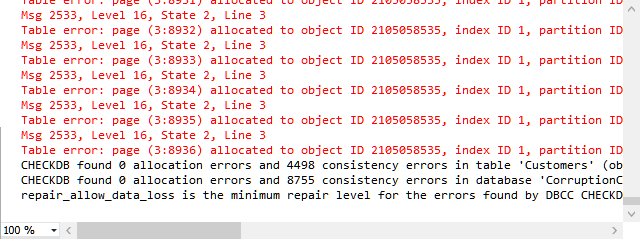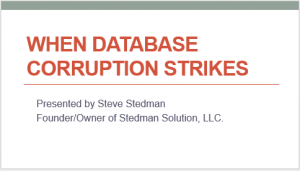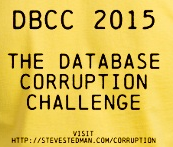The alternate solution to the Database Corruption Challenge this week was created by Patrick Flynn. This solution is the only solution to successfully recover all the data without using any of the backups. If the challenge had been structured differently and all you had was just the database files and no backups, this solution would work just fine.
As you read through this solution, you will notice the use of Common Table Expressions throughout the solution. Patrick is the first person that I have seen write TSQL code that uses Common Table Expressions more than I do. (I mean that as a compliment Patrick)
To start with let’s add the UDF_Convert_Hex_to_Binary function into the master database to match what Patrick had in his system.
All code provided by Patrick, comments and screenshots by me.
-- Step 0 - Create Supporting function
USE [master]
GO
CREATE FUNCTION [dbo].[UDF_Convert_Hex_to_Binary]
(
@HEX VARBINARY(MAX)
)
RETURNS VARCHAR(MAX)
BEGIN
DECLARE @BINARY VARCHAR(MAX)
;WITH N1 (n) AS (SELECT 1 UNION ALL SELECT 1),
N2 (n) AS (SELECT 1 FROM N1 AS X, N1 AS Y),
N3 (n) AS (SELECT 1 FROM N2 AS X, N2 AS Y),
N4 (n) AS (SELECT ROW_NUMBER() OVER(ORDER BY X.n)
FROM N3 AS X, N3 AS Y)
SELECT @BINARY=ISNULL(@BINARY,'')
+ CONVERT(NVARCHAR(1), (SUBSTRING(@HEX, Nums.n, 1) / 128) % 2)
+ CONVERT(NVARCHAR(1), (SUBSTRING(@HEX, Nums.n, 1) / 64) % 2)
+ CONVERT(NVARCHAR(1), (SUBSTRING(@HEX, Nums.n, 1) / 32) % 2)
+ CONVERT(NVARCHAR(1), (SUBSTRING(@HEX, Nums.n, 1) / 16) % 2)
+ CONVERT(NVARCHAR(1), (SUBSTRING(@HEX, Nums.n, 1) / 8) % 2)
+ CONVERT(NVARCHAR(1), (SUBSTRING(@HEX, Nums.n, 1) / 4) % 2)
+ CONVERT(NVARCHAR(1), (SUBSTRING(@HEX, Nums.n, 1) / 2) % 2)
+ CONVERT(NVARCHAR(1), SUBSTRING(@HEX, Nums.n, 1) % 2)
FROM N4 Nums
WHERE Nums.n<=LEN(@HEX)
RETURN @BINARY
END
GO
Once that function is created, let’s drop the previous CorruptionChallenge7 database, because this is probably not our first time running through the solution. If you have a different way of checking for a database and dropping it, please see my blog post related to this topic earlier today.
Read More »Database Corruption Challenge Week 7 – Alternate Solution


